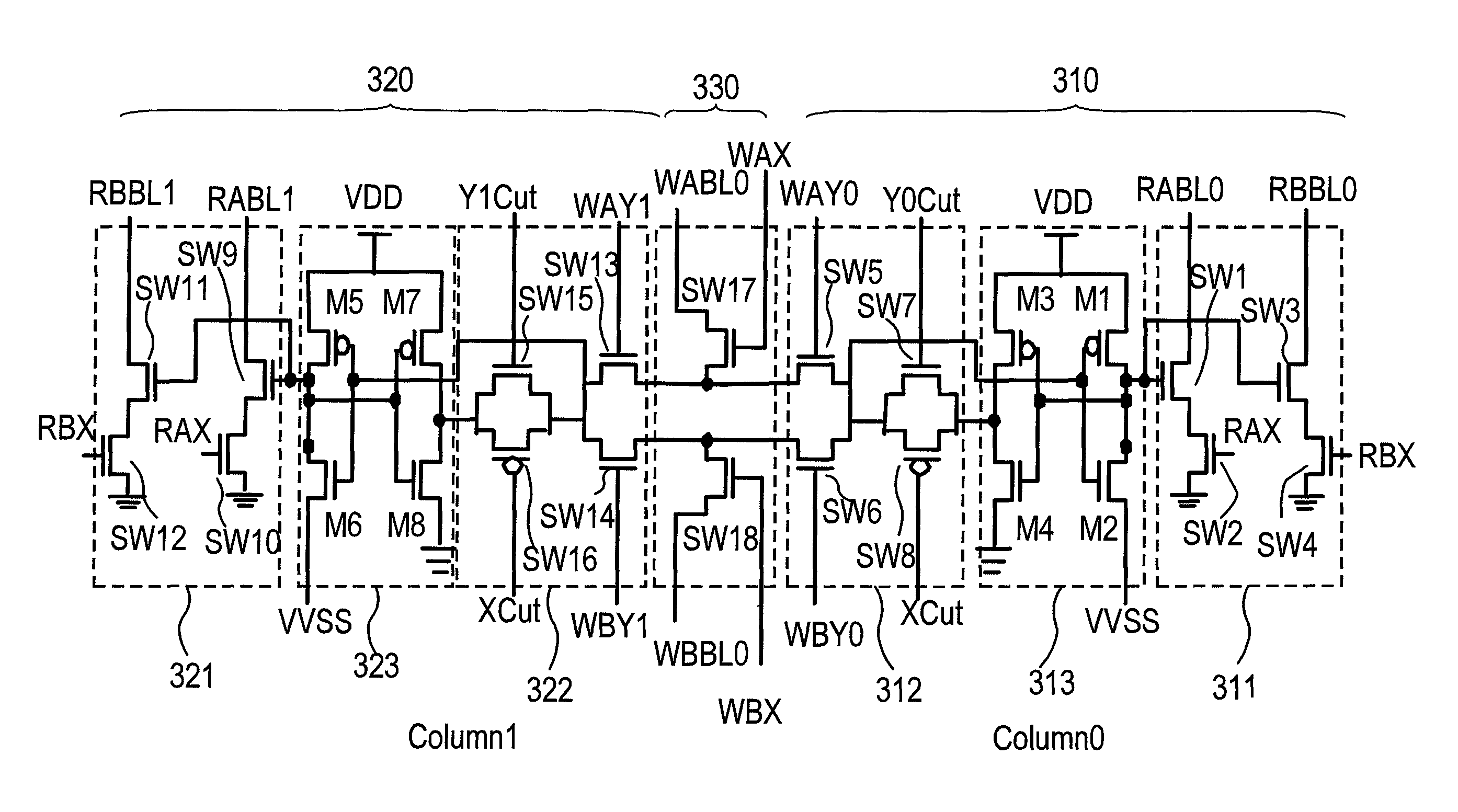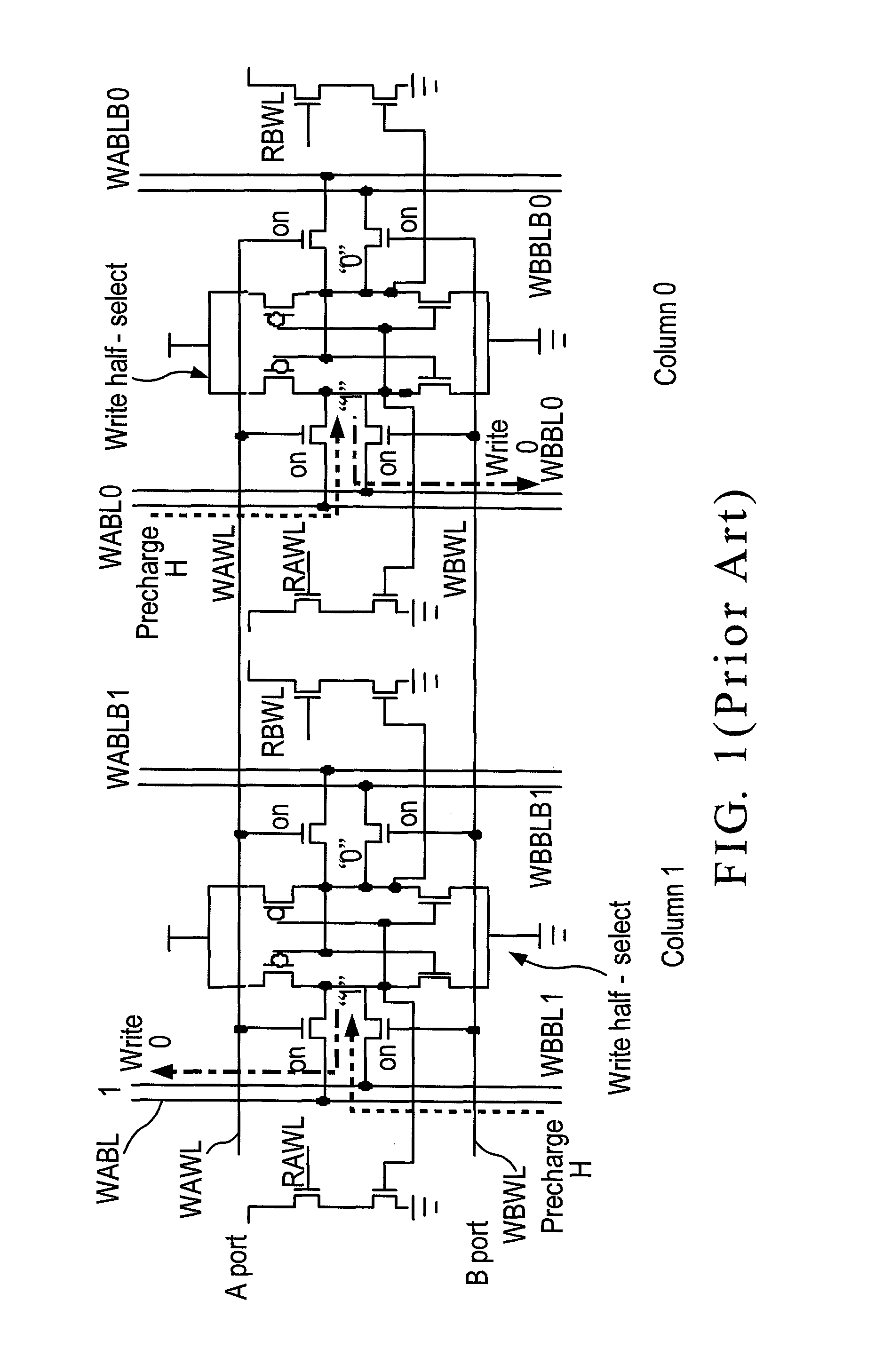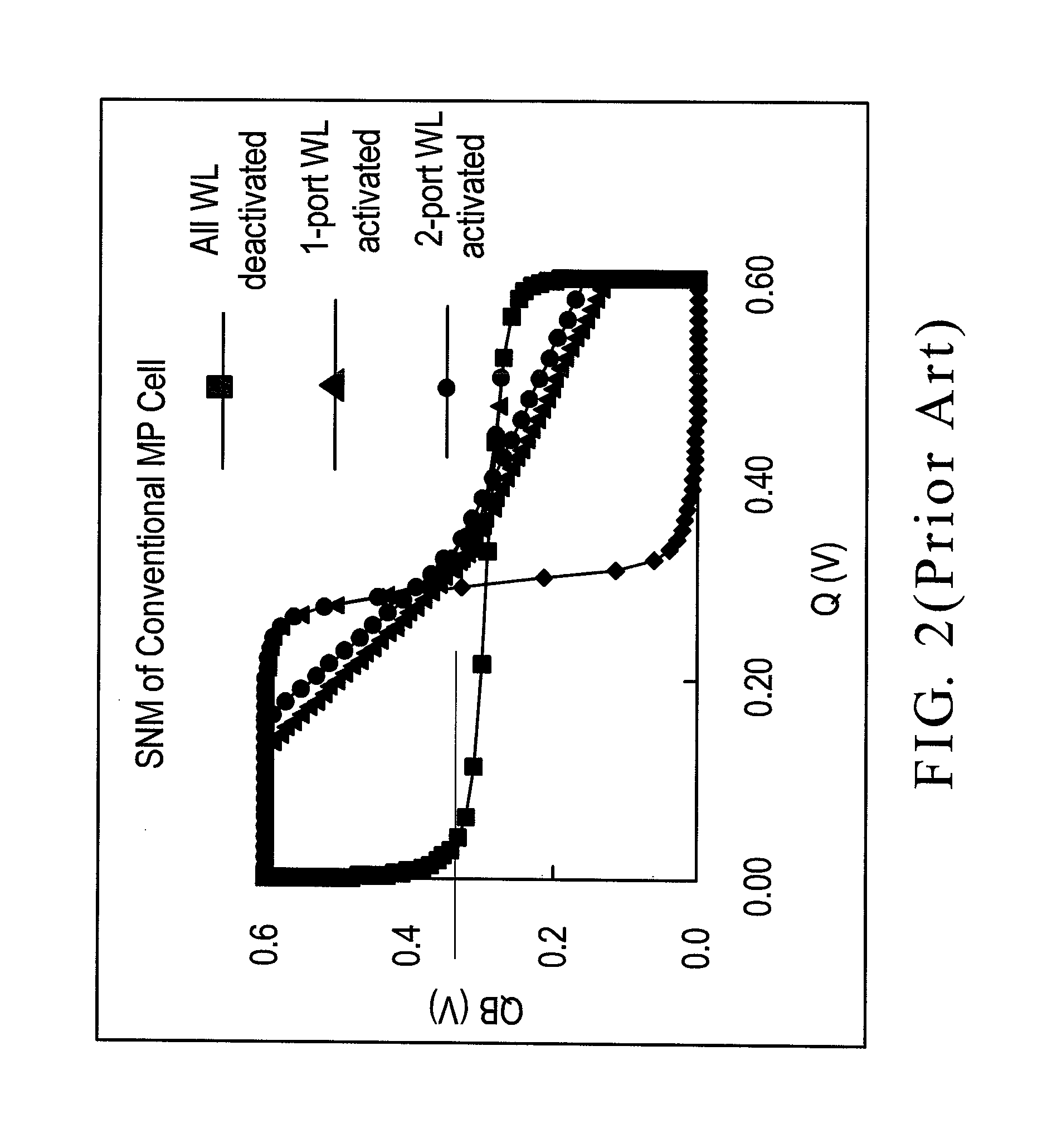Multi-port SRAM with shared write bit-line architecture and selective read path for low power operation
a bit-line architecture and multi-port technology, applied in the field of dual-port static random access memory (sram), can solve the problems of difficult to write/write, difficult to write “0” in column b>1/b> from a-port, and difficult to write “0” in column b>0/b> from a-port, so as to reduce the total number of write bit-lines, expand the static noise margin, and reduce the effect of power operation
- Summary
- Abstract
- Description
- Claims
- Application Information
AI Technical Summary
Benefits of technology
Problems solved by technology
Method used
Image
Examples
Embodiment Construction
[0035]FIG. 3 is a schematic diagram of a multi-port SRAM with shared write bit-line architecture and selective read path for low power operation according to the invention. As shown, the multi-port SRAM 300 includes a first memory cell 310, a second memory cell 320, and a common switch set 330.
[0036]FIG. 4A and FIG. 4B are circuit diagrams of a multi-port SRAM 300 with shared write bit-line architecture and selective read path for low power operation according to the invention. As shown, the first memory cell 310 has a first storage unit 313, a first switch set 311, and a second switch set 312. The first switch set 311 is connected to a first A-port read bit-line (RABL0), a first B-port read bit-line (RBBL0), and the first storage unit 313. The second switch set 312 is coupled to an A-port write bit-line (WABL0) and a B-port write bit-line (WBBL0), and connected to the first storage unit 313.
[0037]The second memory cell 320 has a second storage unit 323, a third switch set 321, and ...
PUM
 Login to View More
Login to View More Abstract
Description
Claims
Application Information
 Login to View More
Login to View More - R&D
- Intellectual Property
- Life Sciences
- Materials
- Tech Scout
- Unparalleled Data Quality
- Higher Quality Content
- 60% Fewer Hallucinations
Browse by: Latest US Patents, China's latest patents, Technical Efficacy Thesaurus, Application Domain, Technology Topic, Popular Technical Reports.
© 2025 PatSnap. All rights reserved.Legal|Privacy policy|Modern Slavery Act Transparency Statement|Sitemap|About US| Contact US: help@patsnap.com



